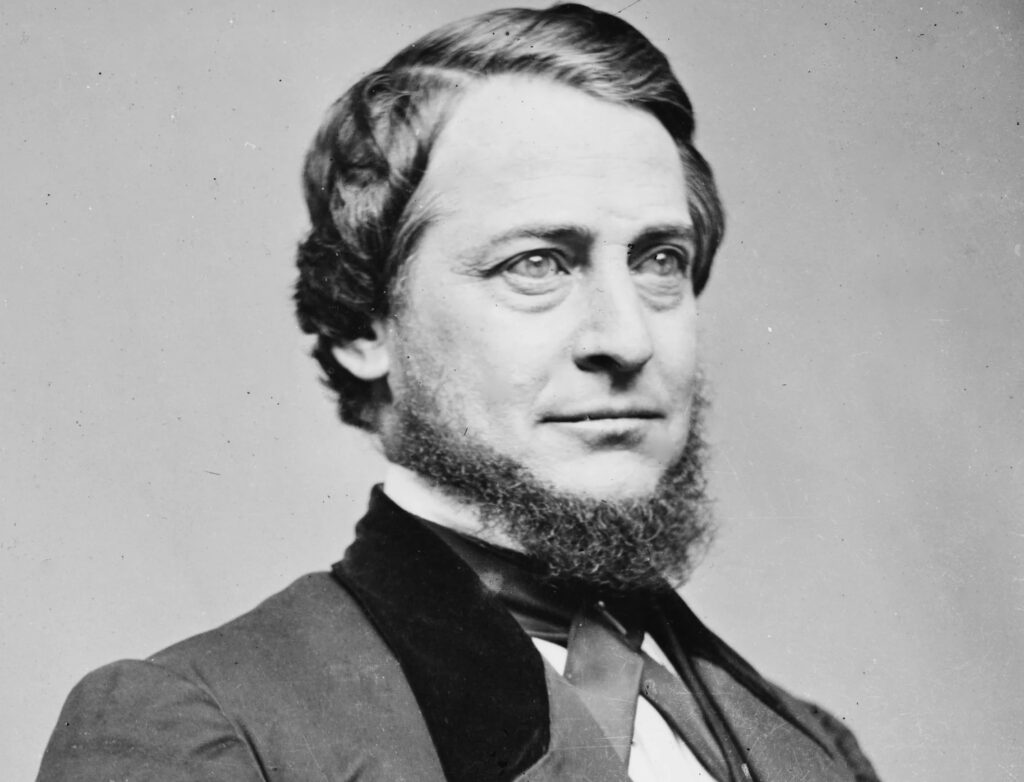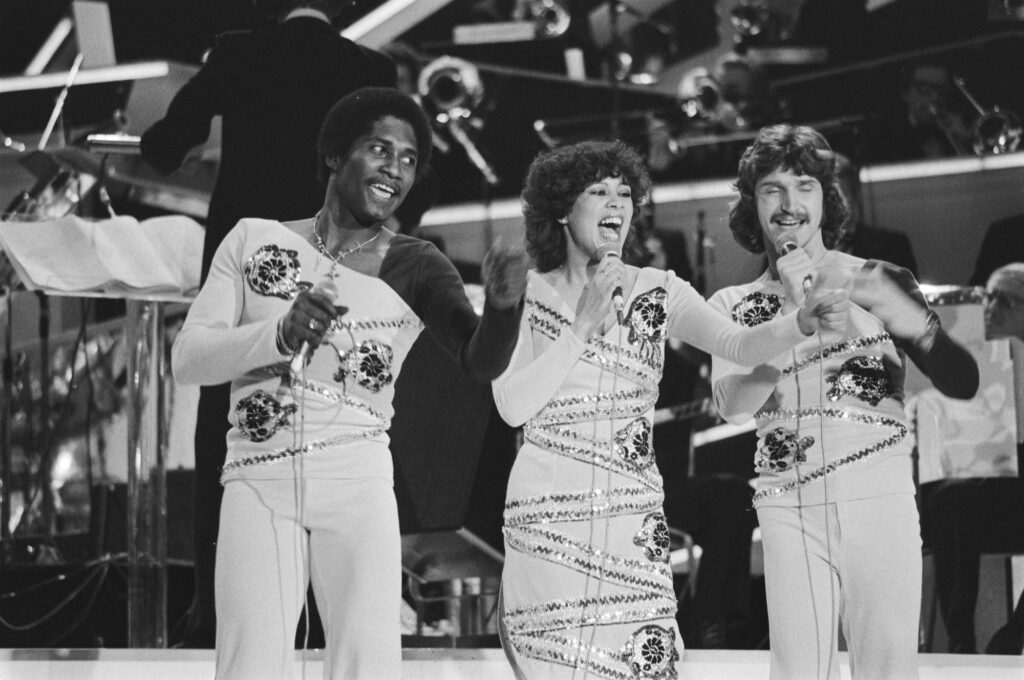Throughout the history of Ohio, there have been many notable people who have hailed from our great state. There are some entertainers, like George Clooney and Sarah Jessica Parker. Talk show hosts like, oh, I don’t know, Arsenio Hall and Phil Donahue (and that other one). You’ve got presidents, like Grant and the two Harrisons. There have been astronauts like Neil Armstrong, inventors like Orville and Wilbur Wright, and names like John D. Rockefeller, Larry Flynt, Ted Turner. And, yes, a few names we’d like to forget like Charles Manson. And then there is Clement Vallandigham.
During the fifty years that Clement walked this earth (1845-1871) he was able to accomplish more than many other Ohioans. During the American Civil War, he was the leader of a group known as the Peace Democrats or Copperheads – a group that used grassroot techniques to oppose war. After that, from 1845 to 1847, he served in the Ohio House of Representatives (Columbiana County), and from 1858 to 1863 he was a member of the U.S. House of Representatives (Ohio’s 3rd District).
But, perhaps, two of the more notable events that cemented his name into the annals of history occurred after (or as) his political career was coming to an end. Both were, essentially, criminal trials. In the first, he had been the one arrested. In the other, he was an attorney defending a man accused of murder.
The Arrest of Clement Vallandigham
Vallandigham probably would have gone down in history a bit differently had it not been for one single thing: slavery. Or, perhaps I should say, his feelings about it.
See, even though Ohio was not a slavery state, Clement was pro-slavey (and rather anti-abolitionist) and wasn’t afraid to speak his mind. And, in a way, that’s kind of what got him into trouble in the first place.
After The Civil War, General Ambrose Burnside, the commander of the Department of Ohio and one gent who really tried to popularize Sideburns, wanted to squash any and all Confederate sympathizers after the war. One of the ways he set out to intimidate those Confederates was by enacting something named General Order No. 38, because supposedly General Orders one through thirty-seven were already taken. In short, The Order declared that anyone sympathizing with The Confederacy was guilty of treason and would be dealt with harshly.
Vallandigham was aware of this order, and spoke out against the order on principle. However, it did not stop him from, on May 1, 1863, giving a speech during which he said (among other borderline treason-esque things) that The American Civil War was no longer about The Union, but an attempt by King Lincoln to sacrifice liberty to free the slaves. Needless to say, this didn’t go over well with old Sideburns Burnside, who ordered his arrest.
On May 6th and 7th, Callandigham was tried (court-martialed, really) by a military tribunal. Several witnesses gave testimony that Vallandigham did, in fact, call the United States President “King Lincoln” but otherwise paraphrased pro-Confiderate aspects of the speech.
In his defense, Callandigham called a single witness, a Congressman named Samuel S. Cox, who was also an anti-abolitionist, in part as a character witness but also in an attempt to claim that the court did not have jurisdiction over the matter. He lost that argument and was found guilty. He was then “exiled” (for lack of a better word) to The South for the remainder of the war.
Today, General Order Number 38 is still being debated in political and law schools, although The United States Supreme Court did have the final say in February, 1864, when it ruled that the court didn’t have the authority to do what it did, but for Clement it was a bit too late.
The McGehean – Myers Affair
The first time I can remember hearing the name Clement Vallandigham, it was during a rather comical piece that introduced the man as a lawyer who would do anything (and they meant ANYTHING) to get his client off. It didn’t take me long to realize that was little more than clickbait … but I get the joke.
Even to this day we’re not entirely sure what happened the night of Christmas Eve, considering the events took place in a room full of drunk idiots and the days of CSI units solving a crime perfectly in an hour (or in 44 minutes if you delete the commercials) is still a long way off. However, there are a few details that we know for sure.
That night, Thomas Myers was playing cards (gambling) in a crowded downtown Hamilton, Ohio saloon, presumably because they had nothing better to do on a Christmas Eve. By most accounts, it had been a fairly typical evening thus far, so if a bunch of black and white movies are any indication, it was a fairly rowdy time.
At some point, Thomas McGehean entered the saloon and almost before long, a muffled shot was heard before chaos erupted and suddenly people were scrambling around trying to get out of harm’s way, someone pulled out a slingshot for … reasons, I guess. As for Thomas Myers, he fell to the ground with a single gunshot wound that would end his life.
The big question was, who shot him? And why?
The easiest answer (maybe or maybe not the correct one) was that Thomas McGehean shot Myers. The two men had been in altercations before, and it was no secret the guys loathed each other. McGehean was also known to be rather lawless, prone to violent outbursts, and let’s face it, if they gave out an Asshole of the Year award, he’d most certainly have won every year, hands down. So, yeah – they tried to pin the murder on him.
After being arrested, he hired Clement Vallandigham to be his attorney.
On the first day of the trial, the prosecution laid out their case, which was circumstantial at best. Nobody remembers seeing McGehean shooting Myers, but he was definitely up to no good that night. There was some testimony about guns, and gunshot residue, so as the evening was winding down, Vallandigham grabbed his gun, loaded it up, and went out to test the prosecutors theories. He returned to the Golden Lamb, where everyone involved in the trial was being housed, and began to confer with his team. The next thing he wanted to do was to examine Myers gun, which he took to his room, along with his own gun, which still had a few bullets in it, and I’m sure you can see where this is going.
Vallandigham’s theory was that Myers had accidentally shot himself, when he reached into his pocket to pull out his firearm. The big problem with that theory was that everyone knew Myers was familiar with guns and they doubted he would actually accidentally shoot himself. That would be a rookie mistake, and he wasn’t a rookie.
As Vallandigham was trying to test his theory, rather than pick up Myers unloaded gun, he picked up his own and promptly and accidentally shot himself, causing similar injuries to what Myers had.
The following day, Thomas McGehean was acquitted of murder charges, and went on to live a few more years before being shot to death himself in what was most likely an unrelated incident.
And from that day forward, Clement Vallandigham became known as the attorney who shot and killed himself to prove his client was innocent. (Kind of.)



